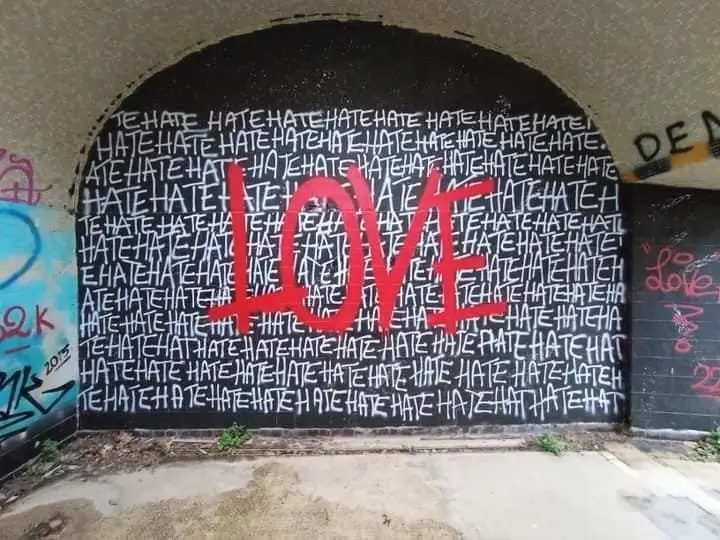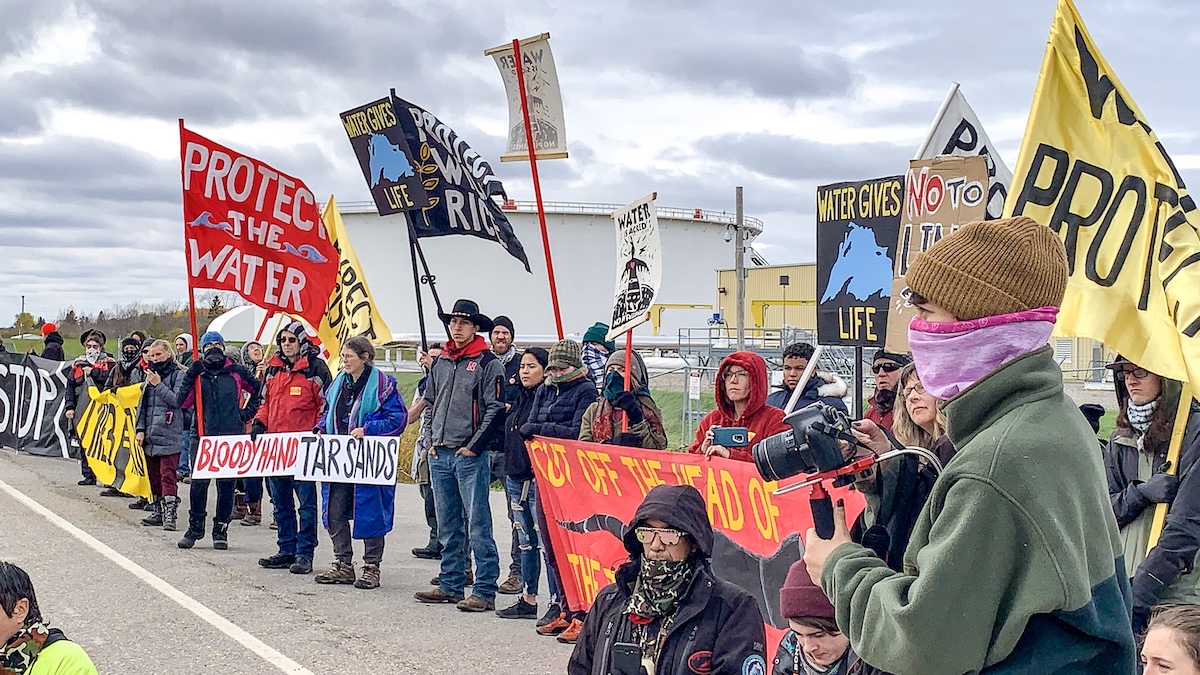War does not serve us. It represents the worst in humanity. Thankfully, we now have nonviolent tools to manage conflict in life-affirming ways.
By Nadia Mejjati for Waging Nonviolence
The proponents of war say that violence is necessary for “defense.” But is that true? Humanity has learned how to wipe itself out in a matter of minutes with just a fraction of its nuclear weapons capability. Our atrocious culture of violence shows thousands of children killed in cold blood like a relentless horror film playing out on social media. We have invented killer-drones to undertake massacres without personally witnessing the horrors inflicted. In the face of our threatened extinction as a species, we must do better. That starts with seeing war for what it is.
War is grotesque. It represents the worst of humanity: the cruelty of unharnessed anger and unhealed trauma, led by greedy leaders far from the frontlines, playing with human lives. No matter who wins or loses, the result is pain and increased trauma on both sides, fuelling further injustice and oppression.
Benjamin Casteillo describes, “In the past, dangers of hostility, scarcity and rejection were met with primal impulses of domination, accumulation and conformism, thus trapping a large part of humanity in self-perpetuating rivalries for power, resources and status. Yet, in the current context of exponential technological development which has resulted in weapons of mass destruction, multiplied extractive capacities, and amplified capacities for social engineering, these primal impulses are becoming increasingly obsolete and unsustainable, resulting in existential risks of catastrophic wars, ecosystems destruction and human obsolescence, threatening life itself.”
War does not create harmony. Despite this, we glorify it in our history classes when we could teach the history and practice of nonviolence, to our advantage. Erica Chenoweth and Maria Stephan provided us with statistical evidence that nonviolence is far more successful in reaching campaign objectives than violence. In other words, the belief that we must respond to violence with more violence to establish peace is now outdated by documented fact.
War is weak — especially compared to the hard work of nonviolent struggle, diplomacy and peacebuilding. Transformational change takes courage and commitment. Nonviolence is not a wishy-washy choice we make because we have hippy parents. It is a response to the violence in our communities, our families, and most importantly, in ourselves. It is a dedicated yearning to find other ways to be, ways that favor life.
War is nonsensical, unless you profit from selling arms and destroying life. We face the ecological breakdown of our planet, while the military industrial complex is outrageously polluting, topping the fossil fuel consumption record, obliterating life and landscape. Wars carry a terrible toll for living systems. But even the power-hungry and arms traders getting rich on the brutality of war will be unable to party if there is a nuclear war, or if we blindly walk off the cliff of ecological collapse.
Evolutionary biologist Elisabet Sahtouris tells us, “In the nearly four billion years of Earth’s evolution, species after species, from the most ancient bacteria to us, have gone through a maturation cycle from individuation and fierce competition to mature collaboration and peaceful interdependence. The maturation tipping point in this cycle occurs when species reach the point where it is more energy efficient — thus, less costly and more truly economic — to feed and otherwise collaborate with their enemies than to kill them off.”
An intelligent species like humanity (who has round-tripped to the moon and transplanted hearts) can manage conflict in smarter ways than the death and destruction that war brings. Now is the time for humanity to mature and stop war.
Conflict is normal and can be addressed in a regenerative manner. While facing adversity is part of life, there are constructive ways to do so.
Where unarmed civilian protection, or UCP, is practised, it’s shown to be effective in serving communities internationally with nonviolent methods. As well as protecting people, UCP facilitates communities voicing needs and learning skills and strategies for peacekeeping. Relationships and trust are built over time between everyone involved, with the goal of peace belonging to the local people.
Mediation and nonviolence techniques, used by trained professionals, replace police callouts in mental health crisis situations with much better outcomes. Violence and war happen when we don’t understand “the other.” Nonviolence recognizes our shared humanity, so poignantly demonstrated in our universal needs. Thus it seeks compassionate understanding, whether of troubled individuals or at the large scale of nations. This nurturing approach moves us towards finding solutions, healing and regaining peace for everyone, as opposed to pushing problems to a later date.
Restorative justice practices are valuable for both victims and perpetrators. They reduce recidivism in the varied contexts of prisons and schools. Crime decreases in communities where the focus is not simply punishment, but to create opportunities for learning personal responsibility and moral conduct, to transform harmful, unsociable behaviors, while regaining dignity in making amends. Truth and Reconciliation is a form of restorative justice that has taken place in areas where there was once great discord, like South Africa and Rwanda. By facing conflict and addressing it in an honest, heart-felt and ongoing manner, humanity can process issues and aim to move forward with post-traumatic growth.
The rich history of nonviolent struggle exemplifies its precious utility in the pursuit of important goals such as protecting civil rights and putting an end to oppression. While war uses force, fear and separation, nonviolence builds with empathy, the recognition of dignity and uplifting creativity.
Our acceptance of violence has allowed us to wage war on soil, air and water, as if nature was our enemy. Instead of fostering universal love, by treating each other and our beloved Earth home with care and respect, we have been causing harm, untethered. Science shows us that Earth thrives as a unified whole favoring biodiversity. Applying biomimicry, our species would do well to embrace the unity encompassing humanity’s incredible diversity and reharmonize our existence through intricate cooperation.
We humans seem to have lost confidence in our ability to make wise choices, to dream and act into being our collective future. We need to ardently refuse the world we abhor — the wars and ecocide — and actively support a new paradigm. The internet, like mycelium, facilitates immense co-creative possibilities to reaffirm the will for harmonious life. We are sharing healing methodologies internationally and collaborating on a myriad of emerging projects to restore our beloved Earth. Knowledge and wisdom from diverse groups worldwide are accessible, including Indigenous Earth restoration practices, genuine citizen democracy, birth control methods (so our population respects Earth’s carrying capacity), life-serving technologies, and nonviolence techniques.
We are already witnessing an evolution of consciousness in the work of pioneering organizations such as Nonviolent Peaceforce, The Choose Love Movement and The Tariq Khamisa Foundation, to name but a few. They teach practical skills of nonviolent conflict resolution, cultivating life-affirming relationships and compassionate communities. These leaders demonstrate that we can overcome adversity with courage, nourished by our love for life.
We have the solutions we need. If we accept war as obsolete, what kind of world can we create?


